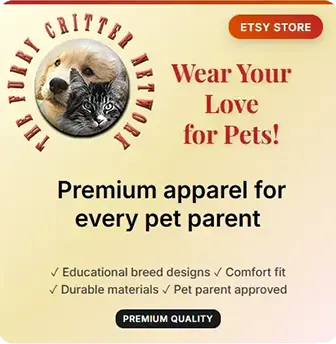The Bosanski Ostrodlaki Gonic Barak carries several names that reflect its linguistic heritage and geographical origins in the Balkan region. The breed's full Bosnian name, "Bosanski Ostrodlaki Gonic Barak," translates directly to "Bosnian Coarse-haired Hound Barak," with each word providing specific information about the breed's characteristics and heritage. The term "Bosanski" indicates the breed's Bosnian origins, "Ostrodlaki" describes the distinctive coarse, rough coat texture, "Gonic" identifies it as a scenthound or hunting dog, and "Barak" is a traditional term used for certain types of hounds in the Balkans.
In English-speaking countries and international kennel club registries, the breed is most commonly known as the Bosnian Coarse-haired Hound, a direct translation that emphasizes both the geographical origin and the most distinctive physical characteristic—the rough, shaggy coat that protects the dog while working in harsh terrain. This standardized English name helps international fanciers and judges quickly understand the breed's essential characteristics, though many breed enthusiasts and those familiar with the breed prefer to use the full Bosnian designation as a mark of respect for the breed's cultural heritage.
Within its native Bosnia and Herzegovina, the breed may also be referred to simply as "Barak," particularly by hunters and those deeply familiar with local hunting traditions. This shortened version acknowledges the breed's classification within the broader family of Balkan hound breeds that share similar characteristics and hunting functions. The term "Barak" itself has historical significance in the region, referring to a type of rough-coated scenthound that has been used for hunting in the mountainous Balkans for generations.
Some historical and regional references may use variations such as "Illyrian Hound" or "Bosnian Broken-coated Hound," though these terms are less commonly used in modern breed documentation. The "Illyrian" designation refers to the ancient peoples who inhabited the western Balkans, connecting the breed to the region's deep historical roots. "Broken-coated" is another way to describe the rough, harsh coat texture that distinguishes this breed from smooth-coated hound varieties found in neighboring regions.
The breed enjoys recognition by several major international kennel organizations, though it remains relatively rare outside its native region. The Fédération Cynologique Internationale (FCI), which serves as the world canine organization governing kennel clubs in numerous countries, officially recognizes the Bosanski Ostrodlaki Gonic Barak within Group 6 (Scenthounds and Related Breeds), Section 1.1 (Large-sized Hounds). This classification places the breed alongside other European scenthounds that share similar hunting functions and physical characteristics. The United Kennel Club also recognizes the breed, acknowledging its historical significance and unique characteristics within the scenthound group.

